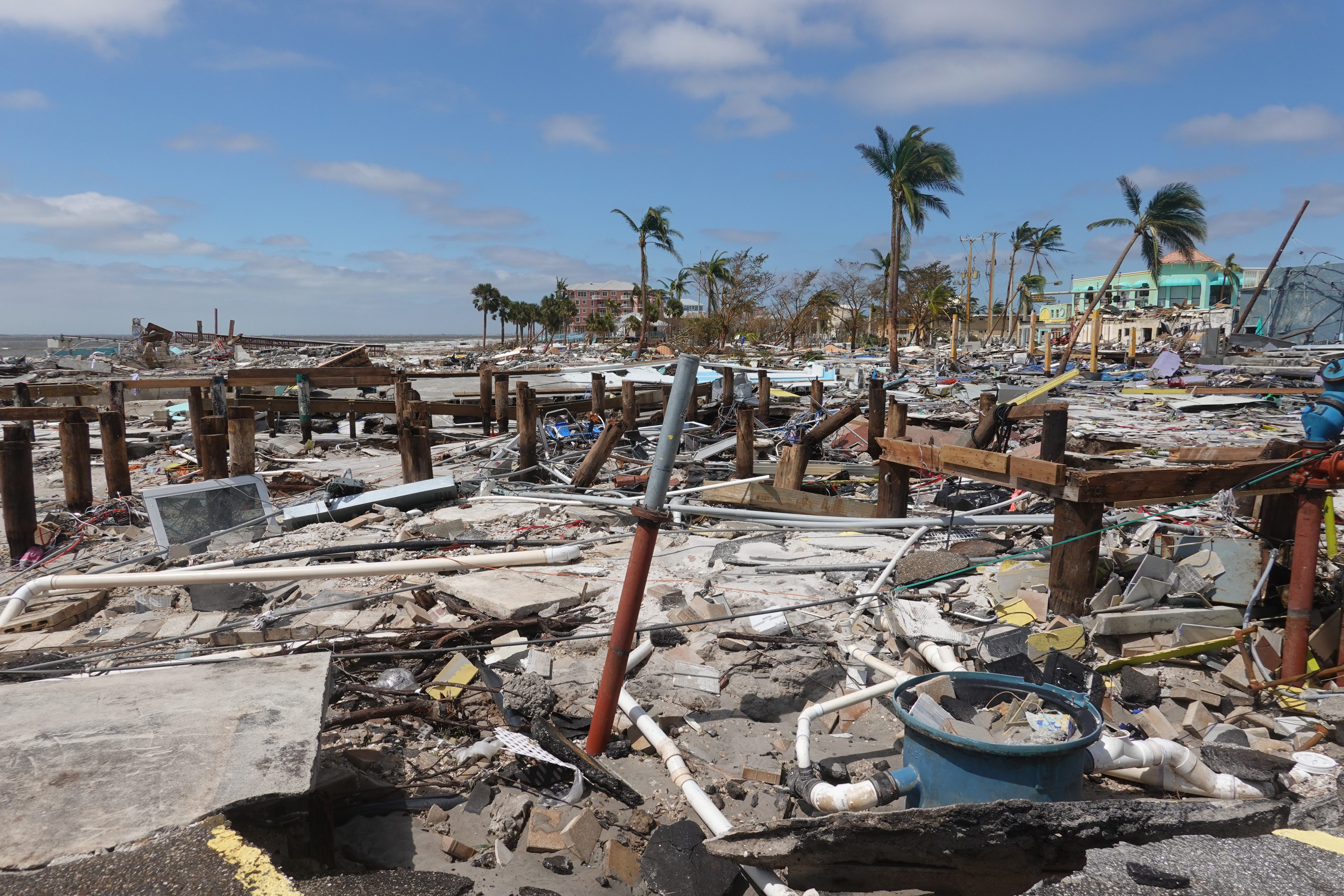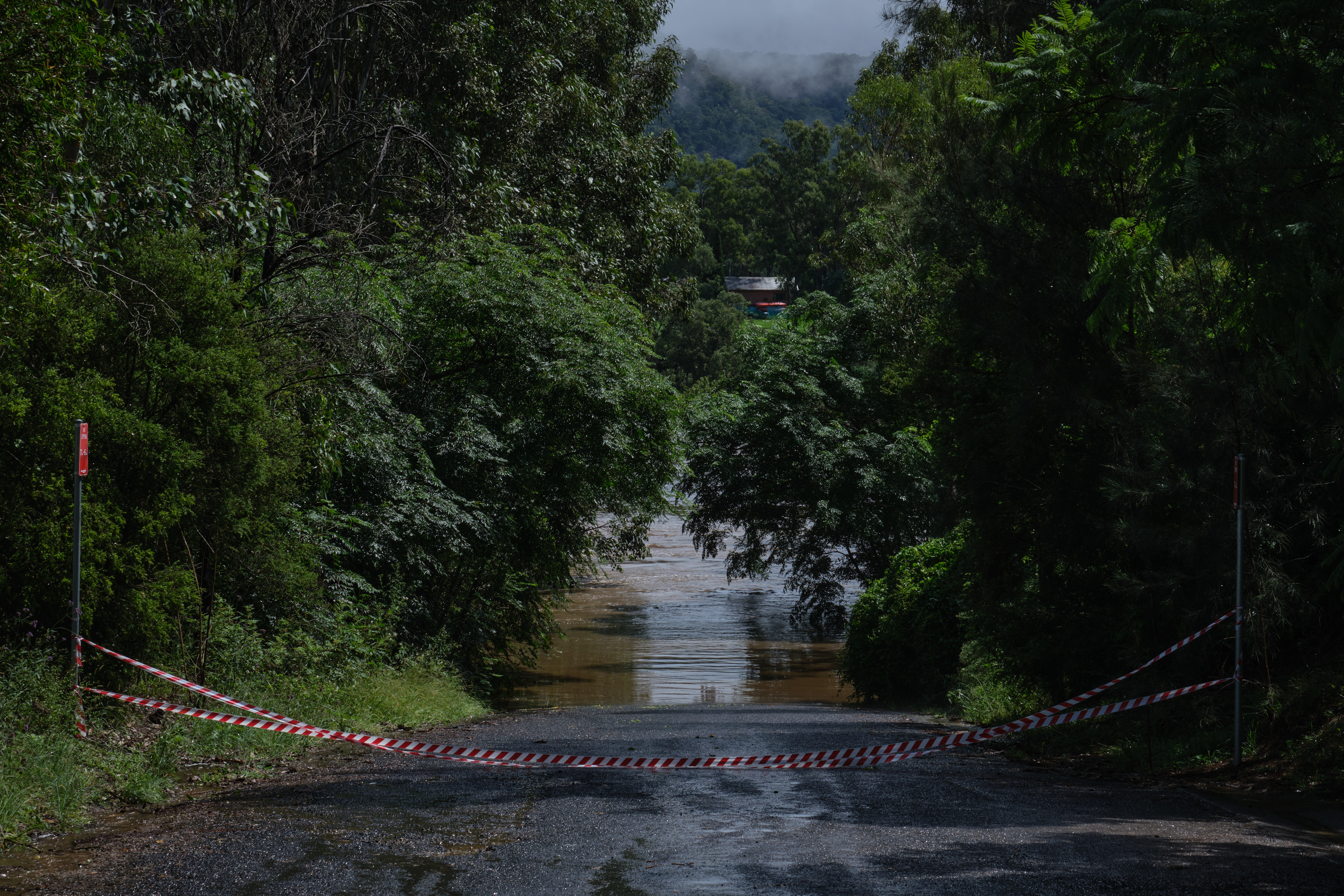Climate change and La Niña driving losses: the natural disaster figures for 2022
01/10/2023
Reinsurance
properties.trackTitle
properties.trackSubtitle
- Natural disasters responsible for high losses across the world
- Provisional estimates for overall losses approximately US$ 270bn, less than in extremely costly 2021
- Insured losses of around US$ 120bn similar to last year – again exceeding the US$ 100bn mark
- Hurricane Ian was by far the costliest natural disaster in 2022: roughly US$ 100bn in losses, of which some US$ 60bn was insured
- Devastating floods in parts of Asia and Australia, exacerbated by La Niña and climate change

Climate change is taking an increasing toll. The natural disaster figures for 2022 are dominated by events that, according to the latest research findings, are more intense or are occurring more frequently. In some cases, both trends apply. Another alarming aspect we witness time and again is that natural disasters hit people in poorer countries especially hard. Prevention and financial protection, for example in the form of insurance, must therefore be given higher priority.
2022 natural disasters in figures
With overall losses of around US$ 270bn (previous year US$ 320bn) and insured losses of roughly US$ 120bn (previous year US$ 120bn), 2022 joins the recent run of years with high losses. Overall losses were close to the average for the last five years, while insured losses were significantly above average (2017–2021: US$ 97bn). The continued high level of insured losses is impacting insurers at a time when they are having to deal with both high inflation rates and a shrinking capital base due to rising interest rates. In contrast, the positive effect on investments from higher interest rates will only come in time.
“Two factors should be kept in mind when considering the 2022 natural disaster figures. Firstly, we are experiencing La Niña conditions for the third year in a row1. This increases the likelihood of hurricanes in North America, floods in Australia, drought and heatwaves in China, and heavier monsoon rains in parts of South Asia. At the same time, climate change is tending to increase weather extremes, with the result that the effects sometimes complement each other”, explains Ernst Rauch, Chief Climate Scientist at Munich Re.
What were the worst natural disasters in 2022?
Hurricane Ian was responsible for more than one third of overall losses and for roughly half of insured losses worldwide. This powerful tropical cyclone made landfall on the west coast of Florida in September with wind speeds of almost 250 km/h (150 mph). Only four other storms on record have been stronger when making landfall on the US mainland, while some others were of a similar strength to Ian. According to provisional estimates, it caused overall losses of around US$ 100bn, of which US$ 60bn was insured (not including NFIP2). In terms of insured losses adjusted for inflation, Ian was the second-costliest tropical cyclone on record after Hurricane Katrina in 2005.
Severe storms like Ian fit in with the anticipated consequences of climate change: most researchers do not expect an increase in the overall number of tropical cyclones as a result of global warming. However, they do anticipate a rise in the proportion of particularly severe cyclones with exceptionally heavy rainfall.
The year’s second-costliest and greatest humanitarian disaster was severe flooding in Pakistan resulting from record-breaking monsoon rainfall. In the month of August, rainfall there was between five and seven times heavier than usual. Accelerated glacier melt as a result of the high temperatures significantly increased the flooding. At least 1,700 people were killed. Direct losses are estimated to be at least US$ 15bn – an enormous amount given the size of the country’s GDP. Almost nothing was insured and countless people lost all their belongings. Researchers estimate that the intensity of an event of this kind has already increased by half because of climate change, compared to a world without global warming, and that it will continue to rise in the future.
For insurers, the second-costliest single natural disaster in 2022 was flooding in the southeast of Australia in February and March. In the states of Queensland and New South Wales, extreme rainfall led to countless flash floods and severe river flooding. Numerous residents had to be rescued from their homes by boat or helicopter. The floods also affected the major population centres of Brisbane and Sydney. Of the overall losses of approximately US$ 6.6bn, just under US$ 4bn was insured. In October, torrential rainfall again resulted in disastrous flooding in the southeast of the country. However, losses were not as severe as those at the start of the year. Overall, floods in Australia caused losses of US$ 8.1bn last year, of which US$ 4.7bn was insured.
Natural cycles play an important role in Australian flood risk, as torrential rainfall is much more likely during La Niña years. However, researchers now believe that climate change is additionally influencing the intensity of the rainfall. The same is true for bushfires and heatwaves, which tend to occur in El Niño years, the opposite phase to La Niña.
Regional overview
Hurricane Ian driving disaster losses in USA

North America once again dominated the loss statistics due to the devastation caused by Hurricane Ian. Taken together, natural disasters throughout North America destroyed assets worth around US$ 150bn, of which roughly US$ 90bn was insured. Of these, the USA accounted for around 95% of overall losses, and for 98% of insured losses.
Fiona, the second very severe hurricane in the North Atlantic storm season, tracked northwards along the US east coast over open sea, reaching wind speeds of up to 215 km/h. Fiona ultimately made landfall in the Canadian province of Nova Scotia, with wind speeds that were still above hurricane intensity, causing considerable damage. However, losses were much lower than from Hurricane Ian.
The wildfire season, particularly in California, passed without any events that caused extensive property damage, despite the predominantly dry conditions. In California, the authorities reported wildfires over an area of some 1,400 km2 (350,000 acres), well below the long-term average of almost 2 million acres. Multiple rain events considerably reduced the wildfire risk and made it easier for the fire services to put out any fires that did occur.
Losses in the USA due to severe convective storms were above the average of the past five years. The number of tornadoes recorded approximately matched the long-term average 1991–2020 (1,197). In total, severe thunderstorms in 2022 caused overall losses of around US$ 32bn, of which more than two thirds (US$ 23bn) was insured. Thunderstorm losses were thus significantly greater than the average of the last five years (US$ 23bn overall losses and US$ 17bn insured losses). A single storm front with tornadoes and hail in June caused losses of US$ 3bn (of which US$ 2.3bn was insured).
Shortly before Christmas, large parts of the USA were paralysed by the powerful Winter Storm Elliott. A low-pressure system moved from the northwest across the northern states, causing an extreme outbreak of cold polar air deep into the south of the USA. Northern states around the Great Lakes on the border with Canada were particularly affected, with strong snowfall, ice storms and temperatures dropping to –20°C (-4°F). Further west, even temperatures of around –40°C (–40°F) were recorded. Across the country, some 1.7 million households were hit by power outages, in some cases for many hours. According to media reports, more than 50 people lost their lives.
It is still too early for a reliable estimate of the losses caused by Winter Storm Elliott. As recently as February 2021, a cold snap that reached deep into the southern states of the USA caused losses in the billions, although the 2021 storm lasted longer and affected large parts of the southern United States.
Climate studies see a connection between such strong outbreaks of polar air from the Arctic, favoured by lower temperature differences between the polar regions and mid-latitudes. Overall, however, this question is still a matter for debate in the scientific community.
Drought, heat, hail – extreme summer weather in Europe
In many countries in Europe, the summer was marked by extreme heat and drought followed by severe thunderstorms with heavy hail. In the United Kingdom, the temperature rose above 40°C for the first time ever. In Germany and Italy, river water levels were so low that commercial shipping had to be severely restricted. It is difficult to quantify the indirect economic consequences of climatic events like these.
The hot and dry conditions fuelled wildfires and the 800,000 hectares (8,000 km2) burnt in 2022 in the European Union was two and a half times the annual average of the previous 15 years. Wildfires in Europe tend to be nowhere near as destructive as those in the USA.
What is known as rapid attribution analysis also perceives an influence from climate change on heatwaves and droughts. The more extreme a heatwave is, the more extreme the storms at the end of it can be.
In France and bordering regions in Spain, heavy hailstorms – some of which brought hailstones the size of tennis balls – caused losses in the billions. In northeastern Spain, many people were injured in an extremely severe hailstorm and an infant was actually killed. The hailstorms in France alone caused very high losses of US$ 7.2bn (€6.8bn) in 2022, despite the fact that hailstorms are generally very localised. US$ 5.6bn (€5.3bn) of this amount was insured.
The loss figures for 2022 in Europe also include extratropical cyclones. Following several quiet years, winter storms early in the year resulted in substantial losses. In February, a series of storms in northern and northwestern Europe with wind speeds of hurricane force (greater than 118 km/h) caused losses of US$ 5.6bn (€5bn), of which US$ 4.3bn (€3.9bn) was insured. Although winter storms in Europe do not reach the strength of severe hurricanes, large parts of the continent can be impacted by a single event, resulting in a very high number of minor losses that can quickly add up to billions.
Asia-Pacific region heavily impacted by natural disasters

In the Asia-Pacific region, losses from natural disasters increased to approximately US$ 70bn. Insured losses rose to around US$ 10bn.
As in the past, industrialised countries accounted for a high proportion of insured losses. Apart from the floods in Australia, an earthquake in Japan not far from the site of the 2011 Tohoku earthquake was the disaster with the highest insured losses in the region. The quake had a magnitude of 7.4, according to JMA (Japan Meteorological Agency), and caused overall losses of US$ 8.8bn, of which US$ 2.8bn was insured. Twelve years ago, a much stronger earthquake triggered a devastating tsunami and ultimately caused the Fukushima nuclear disaster. In terms of overall losses, this year’s earthquake was the second-costliest natural disaster in the Asia-Pacific region after the floods in Pakistan.
In many instances, disaster losses in developing countries in Asia are almost totally uninsured. On the subject of the extreme financial consequences of natural disasters in poorer countries like Pakistan, Ernst Rauch had this to add: “Better prevention and early warning systems must contribute to improving protection for people. In addition, the Loss and Damage Fund agreed at the COP27 climate summit in Egypt and the Global Shield initiative presented there need to be promptly implemented as viable instruments. Also, binding, regulated compensation payments can help protect more people against the immediate financial consequences of disasters.”
In China, a protracted heatwave and drought, with temperatures of over 44°C in many parts of the country, led to water shortages and crop failures. The water level in the Yangtze, the longest and economically most important river in the country, receded significantly, as did the levels in many other rivers and reservoirs. In some areas, shipping was suspended and the electricity yield from key hydroelectric stations fell drastically. Several large industrial corporations had to temporarily suspend production. According to rough estimates, the damage, including losses from crop failures, could be in the mid-single-digit billions, virtually none of which will have been insured.
Africa and South America
Two severe flood events were the year’s worst natural disasters in Africa. Following unusually heavy monsoon rains in Nigeria, large parts of the country were flooded, some for weeks on end. Well over 100,000 buildings and crops on more than 5,000 km2 (500,000 hectares) of farmland were destroyed. Over 600 people lost their lives.
In eastern South Africa, a powerful low-pressure storm brought extreme rainfall, flash floods and inundation. Some places saw 450 mm (litres per square metre) of rain in the space of two days. The worst-affected provinces were Eastern Cape and KwaZulu-Natal, including the port city of Durban with its several million inhabitants. Each of these flood disasters caused losses in the region of US$ 4bn. Insured losses in South Africa topped the billion-dollar mark.
A severe drought occurred in South America. In southern Brazil, crop failures caused billions of dollars in losses, according to a state-owned agricultural research institute.
Munich Re is one of the world’s leading providers of reinsurance, primary insurance and insurance-related risk solutions. The group consists of the reinsurance and ERGO business segments, as well as the asset management company MEAG. Munich Re is globally active and operates in all lines of the insurance business. Since it was founded in 1880, Munich Re has been known for its unrivalled risk-related expertise and its sound financial position. It offers customers financial protection when faced with exceptional levels of damage – from the 1906 San Francisco earthquake through Hurricane Ida in 2021. Munich Re possesses outstanding innovative strength, which enables it to also provide coverage for extraordinary risks such as rocket launches, renewable energies or cyberattacks. The company is playing a key role in driving forward the digital transformation of the insurance industry, and in doing so has further expanded its ability to assess risks and the range of services that it offers. Its tailor-made solutions and close proximity to its customers make Munich Re one of the world’s most sought-after risk partners for businesses, institutions, and private individuals.
Disclaimer
Munich Re’s NatCatSERVICE collects information from governmental agencies, scientific institutes, associations, the insurance industry, the media and other publicly available sources in order to analyse nat cat losses. NatCatSERVICE applies Munich Re’s comprehensive in-house nat cat expertise and market data from the worldwide insurance markets to its analyses. Munich Re assumes no guarantees as to the accuracy of this data, which is collected as of specific dates and can also change at any time. The information may not be used as the basis for any decision without prior professional advice and careful contextual analysis. Munich Re is not liable for damages arising from any decisions that third parties may take on the basis of this information.
This media release contains forward-looking statements that are based on current assumptions and forecasts of the management of Munich Re. Known and unknown risks, uncertainties and other factors could lead to material differences between the forward-looking statements given here and the actual development, in particular the results, financial situation and performance of our Company. The Company assumes no liability to update these forward-looking statements or to make them conform to future events or developments.
Further information
For Media inquiries please contact
/Straub_Stefan.jpg)
/Rakette-Axel_gold.jpg/_jcr_content/renditions/crop-1x1-400.jpg./crop-1x1-400.jpg)

/Faith_Thoms.jpg)
